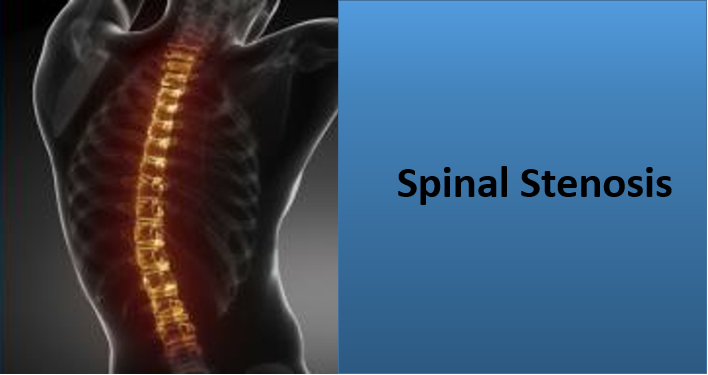What is Spinal Stenosis? Causes, Symptoms and Treatment Options
Spinal Stenosis is one of the most common degenerative spinal condition that leads to surgery, especially in the elderly. The word ‘Stenosis’ is used to define the narrowing of the passage or channel in the body. In this case, this channel happens to be the Spinal Canal. This narrowing of the canal causes loss of space inside the spinal canal putting pressure on the nerves passing through the canal.
This pinching like pressure subjected on these nerves running down the legs and other parts of the body manifests itself as the pains, cramps, numbness or weakness. This stenosis (narrowing) can occur anywhere causing pain in the legs, neck, shoulder or even arms depending on the area of the spine affected. But it mostly occurs in the Lumbar Spine (lower back) which is then termed as Lumbar Spinal Stenosis.
Causes and Symptoms of Spinal Stenosis:
There are cases where people are born with a smaller spinal canal which increases the likelihood of Congenital Spinal Stenosis. Other than these cases, Spinal Stenosis is most often caused by degenerative changes caused by aging. This narrowing of the spinal canal generally occurs as a result of wear and tear that the canal is subjected over the years. Overgrowth of bone, thickening of ligaments, and bulging discs as a result of aging also can contribute to this condition. Having said that, medical conditions like Osteoarthritis, Spinal tumours can also increase the onset of Spinal Stenosis. Men and women aged more than 50 are common candidates of degenerative Spinal Stenosis.
The most common symptoms of Spinal Stenosis include pain, numbness, and cramping in the legs, especially when standing and walking. Patients with Lumbar Stenosis experience pain in the lower back and legs which subsides after sitting or bending over. Cervical Spinal Stenosis results in intense pain in the neck with weakness or numbness in the legs. The pain is sporadic that develops over time and patients feel relieved as soon as they rest and flex. In some cases, loss of motor function of legs or bowel function is also recorded.
Diagnosis and treatment options of Spinal Stenosis:
Diagnosis is made based on medical history, symptoms, physical examination. Imaging studies (X-ray, CT, and MRI) are used to know the severity and causes of the condition. Though there is no single shot miracle cure for Spinal Stenosis, exercise, medications, and surgery can improve the condition of the patient. Anti-inflammatory medications and injection may be prescribed to reduce the pain and swelling.
Exercises can help you improve your muscular strength and stability to keep your pain in check. In case the above treatment options do not cease the pain surgical options can be considered. Numerous studies have found that surgical procedures for Spinal stenosis offer better results in reducing pain.
In addition to your regular doctor, the patient is advised to consult a specialist if your symptoms match with the above. Dr. Mehta has been successfully treating patients with Spinal Stenosis and can help you devise a treatment plan to get rid of your pain.


